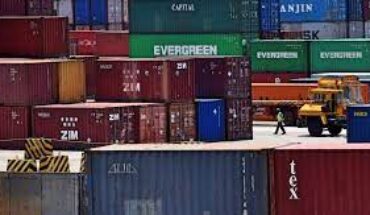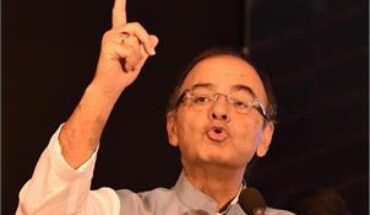Chandrajit Banerjee explores how an India-UAE free trade deal will enable two-way investment flowsIndia has embarked on a new journey — a new free trade agreement (FTA) journey to be precise — with renewed zeal and vigour. India’s approach towards FTAs is now focusing more on gaining meaningful market access and facilitating Indian industry’s integration into global value chains. As Union Minister of Commerce and Industry Piyush Goyal has repeatedly emphasised, India would no longer be signing trade agreements just to join a group, but the new approach of FTA negotiations would respond to the need of new emerging dynamics in international trade and the Indian economy.
Under the revamped FTA strategy, the Government of India has prioritised at least six countries or regions to deal with, in which the United Arab Emirates (UAE) figures at the top of the list for an early harvest deal; the others are the United Kingdom, the European Union, Australia, Canada, Israel and a group of countries in the Gulf Cooperation Council (GCC). The early harvest deal is to be enlarged into a comprehensive FTA in due course of time. This is a very welcome move, where the Government of India can be seen actively revisiting pending FTAs, entering into fresh negotiations and also being open to interim and mini-trade deals.
At the same time, the UAE too announced, in September 2021, its intent to pursue bilateral economic agreements with eight countries — India, the U.K., Turkey, South Korea, Ethiopia, Indonesia, Israel, and Kenya — with the goal of concluding these agreements within one year.
Major economic hub
The UAE has emerged as an important economic hub not just within the context of the Middle East/West Asia, but also globally. The UAE, due to its strategic location, has emerged as an important economic centre in the world. In recent years, the UAE, through its ‘Vision 2021’, has sought to diversify its economy and reduce its dependency on oil. Since 2012, growth has been led, according to a World Trade Organization document, by the non-hydrocarbon sectors reflecting the successful diversification of the economy. Although the UAE has diversified its economy, ‘the hydrocarbon sector remains very important followed by services and manufacturing. Within services, financial services, wholesale and retail trade, and real estate and business services are the main contributors’.
India and the UAE established diplomatic relations in 1972. The greater push has been achieved in bilateral relations when the visit of the Prime Minister, Narendra Modi, to the UAE in August 2015 marked the beginning of a new strategic partnership between the two countries. Further, during the visit of the Crown Prince of Abu Dhabi, Sheikh Mohamed bin Zayed Al Nahyan to India in January 2017 as the chief guest at India’s Republic Day celebrations, it was agreed that bilateral relations were to be upgraded to a comprehensive strategic partnership. This gave momentum to launching negotiations for an India-UAE comprehensive economic partnership agreement, eventually launched in September 2021.
Trade and investment data
As India and the UAE strive to further deepen trade and investment ties, the soon-to-be announced early harvest agreement comes at the most opportune time. The India-UAE total trade merchandise has been valued at U.S.$52.76 billion for the first nine months of the fiscal year 2021-22, making the UAE India’s third largest trading partner. The aim is to boost bilateral merchandise trade to above U.S.$100 billion and services trade to U.S.$15 billion in five years.
With India’s newfound strength in exports as the country is on the verge of creating history by reaching the figure of U.S.$400 billion of merchandise export, a trade agreement with an important country such as the UAE would help sustain the growth momentum. As we are witnessing a big turnaround in manufacturing, the UAE would be an attractive export market for Indian electronics, automobiles, and other engineering products.
A trade agreement is also an enabler for two-way investment flows. The UAE’s investment in India is estimated to be around U.S.$11.67 billion, which makes it the ninth biggest investor in India. On the other hand, many Indian companies have set up manufacturing units either as joint ventures or in Special Economic Zones for cement, building materials, textiles, engineering products, consumer electronics, etc. Many Indian companies have also invested in the tourism, hospitality, catering, health, retail, and education sectors. As both the UAE and India are aggressively pursuing FTAs with several important countries, not only companies from these two countries but also multinational companies from other geographies too would find the UAE and India an attractive market to invest.
As an export springboard
India is aiming to achieve the U.S.$1 trillion of merchandise exports and U.S.$1 trillion of services exports by the year 2030. A trade agreement with the UAE could well be a springboard to realise these ambitious export targets. The UAE is a party to several regional and bilateral FTAs, including with countries in the GCC.
As part of the GCC, the UAE has strong economic ties with Saudi Arabia, Kuwait, Bahrain, and Oman, meaning the UAE shares a common market and a customs union with these nations. Under the Greater Arab Free Trade Area (GAFTA) Agreement, the UAE has free trade access to Saudi Arabia, Kuwait, Bahrain, Qatar, Oman, Jordan, Egypt, Iraq, Lebanon, Morocco, Tunisia, Palestine, Syria, Libya, and Yemen.
This FTA with the UAE will pave the way for India to enter the UAE’s strategic location, and have relatively easy access to the Africa market and its various trade partners which can help India to become a part of that supply chain especially in handlooms, handicrafts, textiles and pharma.
On compliance requirements
The UAE tariff structure is bound with the GCC, and the applied average tariff rate is 5%. Therefore, the scope of addressing Non-Tariff Barriers (NTBs) becomes very important. The reflection of NTBs can be seen through Non-Tariff Measures (NTMs) which have mostly been covered by Sanitary and Phytosanitary (SPS) and Technical Barriers to Trade (TBT). The UAE has 451 SPS notifications. The SPS notifications are mainly related to live poultry, meat, and processed food. In addition, the UAE has 534 TBT notifications, mainly related to fish, food additives, meat, rubber, electrical machinery, etc. Most of the notifications are related to consumer information, labelling, licensing or permit requirements and import monitoring and surveillance requirements. These compliances pose a challenge for Indian exporters. The FTA agreement must try to bring more transparency and predictability in the use of NTBs so that their compliance becomes less cumbersome.
Chandrajit Banerjee is Director General of the Confederation of Indian Industry (CII). The views expressed are personal





